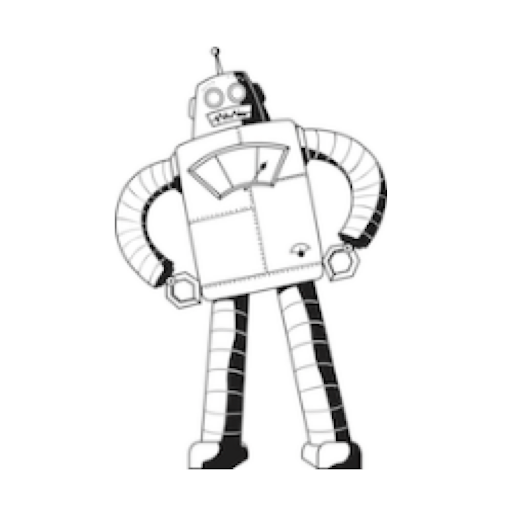This contest is intended to lead toward the IEEE MicroMouse contest. We are using a maze drawn using black lines rather than walls to allow existing line following robots to enter a different type of contest.
Code:
Control:
Open to:
Playing Field:
- Straight line through entering and leaving two opposite sides
- A T-intersection entering and leaving three adjacent sides
- Single 90 degree bend entering and leaving two adjacent sides
- A dead end entering one side and continuing about 1/2 of the way across the square before ending
- The “home” unit with one entrance to a 10 cm x 10 cm black square in the centre

The start of the maze shall be on one of the four sides of the maze and shall be a straight line type unit square. The goal of the maze shall be a 10cm x 10cm black square. The robot should be able to detect that is has reached the goal and in doing so, indicate so by rotating 360° three times and stop. The maze will not have any intended changes in elevation and will sit either directly on the floor or on small, uniform-height supports. The maze will not be an island or loop style maze, and wall-following or always-turn strategies will solve the maze but may not be an optimal solution.
Playing Field Surface:
Competition Objective:
Game Principles:
Game Procedure:
Robot Specifications:
Restrictions:
- No fuel cells or other combustion processes are permitted.
- If you are using Lithium based batteries, consult the MRG General Rules for more information.
- No “3pi” or similar robot kits, will be allowed. This competition is for home built robots that have been programmed by the builder or if the program was downloaded from the internet we expect you to demonstrate how the code was extensively modified. We suggest you bring with you a printout of the code used and the original.
- No leaving a trail of breadcrumbs or anything else in the robots wake.
- No preloading the map once it is revealed. Learning algorithms are permitted but the robot must discover the maze map by itself.
- The robot must complete the entire maze by following the line at all times. Deliberate look-ahead or serendipitous skipping of parts of the maze are considered loss of line. If a robot loses the line but is able to regain it without avoiding any significant part of the maze it may continue at the judges option
- No scratching or other damage of the playing field.
- No remote control of any kind permitted. Once released the robot must be fully autonomous.
- Robots must be powered entirely by electricity.
- Competitors may enter more than one robot in this competition.
- No robot may accept any programming, map or other information from another robot.
- We ask that all contestants submit a copy of the code your robot uses, on a USB thumb drive, which will be returned to you. This is to help us refine the rules for next year and will NOT be shared. Please ensure your robot name is included in the title of your code.
Robot Identification:
MRG General Rules:
- a Warning being issued, or
- a Declaration of an unfinished run, or
- Disqualification from the competition or the event.
